The Ten Best Children’s Books of 2022
This year’s top titles include a fairy-tale remake, a clever counting book and a survey of architectural wonders the world over
:focal(800x602:801x603)/https://tf-cmsv2-smithsonianmag-media.s3.amazonaws.com/filer_public/77/37/7737b2ca-6d02-49d2-98d6-1db9ac4e7051/childrens-booklist-v1.jpg)
My two young girls, ages 5 and 8, are sponges when it comes to mind-blowing facts. They just love to be enveloped in new worlds, and I love nothing more than to see the looks on their faces when they are absorbing new information. In my 15 years at Smithsonian, I’ve learned my own share of incredible tidbits that piqued the curiosity of my kids, or really anyone with their sense of wonder about the world. Like that less time separates us from Tyrannosaurus rex than separated T. rex from Stegosaurus. (Thanks to our dinosaur correspondent Riley Black for that one.) Or, for the history-minded reader, that Cleopatra’s reign is closer to today than it is to when the Great Pyramids were built.
When I tell them these facts, and so many more, I can see their wheels spinning. My youngest is on the cusp of learning to read—a super exciting milestone, but I have some fear creeping in that soon they will no longer want me to read books aloud. I never want that day to come.
The children’s books I’ve selected as this year’s best are full of fun facts about everything from architecture to animal behavior. Most important, though, their authors and illustrators seem to get how kids’ minds work: They are always hungry to learn more, especially when they are being entertained.
Farmhouse by Sophie Blackall
In 2018, author-illustrator Sophie Blackall and her husband, playwright Ed Schmidt, bought a 21-acre abandoned dairy farm in New York’s Catskills and turned the property into Milkwood, a pastoral retreat for children’s book writers and illustrators. Doing so required leveling a dilapidated 19th-century farmhouse on the site, so to first honor the building, Blackall researched the home’s history. A family of 14, with descendants still in the area, had lived there during the Great Depression. So many artifacts of their lives—wallpaper, curtains, schoolbooks, handmade dresses—still rested in the farmhouse. Blackall salvaged them, using bits and pieces to illustrate in collage form her new book, Farmhouse. It was her hope to “make the experience of reading this book feel as close as possible to the experience of being in the farmhouse,” the author shares in an interview. Page by page, readers peer into the house, seeing and hearing about the growing-up and mischief that happened inside its walls, as if they are looking into a dollhouse.
The book’s backstory and craftsmanship shine more so than the text, which reads in one long sentence. Apparently, Blackall composed it on a long drive, memorizing each phrase until she arrived at her destination hours away and recorded it on her phone. “I like the idea that I can say to a kid, do you want to hear a story? It’s only one sentence long,” she says in the interview. But for me, the rolling sentence mimics the way that life moves gently on. (Recommended ages: 3+)
Farmhouse
Step inside the dollhouse-like interior of Farmhouse and relish in the daily life of the family that lives there, rendered in impeccable, thrilling detail.
Bedtime for Bo by Kjersti Annesdatter Skomsvold
Goodnight books are a category in and of their own, and Kjersti Annesdatter Skomsvold’s Bedtime for Bo tops my favorites for this year. Sarah Shun-lien Bynum puts it best in her review in the New York Times: “This book offers a master class in how to shepherd a rambunctious child to bed with patience, creativity and good humor.”
Originally published in Norway and translated into English by Kari Dickson, the story follows Bo’s mom, patient as a saint, as she joins in her son’s imaginary play. (Maybe some of that patience will rub off in the reading?) She uses Bo’s stall tactics—pretending to be a parrot, a bear, a walrus and a giraffe—to teach him about animal behavior, while keeping him moving through the bedtime march of bathing, brushing his teeth and getting tucked into bed. Mari Kanstad Johnsen’s illustrations, which earned the New York Times/New York Public Library Best Illustrated Children’s Book Award, have a chaotic feel to them that matches the messiness of the scene and of life with young kids in general. Thanks for keeping it real, Johnsen, with the loose laundry, cluttered surfaces and spider webs.
Meghan Cox Gurdon at the Wall Street Journal thinks Bedtime for Bo is “as much fun to imitate as it is to read.” Bynum is hopeful it will help the nighttime routine, too. “Imagine it,” she writes, “Bedtime as not a battle but a madcap collaboration!” (Recommended ages: 3 to 6)
Bedtime for Bo
Stretch like a giraffe and snuggle like a meerkat with Bo and Mommy as they get ready for bed!
Chester van Chime Who Forgot How to Rhyme by Avery Monsen
Poor Chester van Chime is a welcome playmate to my kindergartener who is learning to rhyme. Author Avery Monsen introduces the protagonist and his problem in the book’s first couplet: “There once was a youngster named Chester van Chime, who woke up one day and forgot how to rhyme.” By the second couplet, though, everything goes awry. “It baffled poor Chester. He felt almost queasy. To match up two sounds, it was always so…” Monsen writes, “…simple for him.” Failed rhyme after failed rhyme will have kids finishing the painfully obvious sentences in what BookPage declares “a guaranteed good time.” Publisher’s Weekly notes that “what starts out as a book about wordplay turns into an inventive and giggly antidote for the bad-day blues.”
Be sure to spend some extra time with each page, because the illustrations by Abby Hanlon are filled with slugs on rugs, a fox in socks and other rhyming pairs. (Recommended ages: 4 to 6)
Chester van Chime Who Forgot How to Rhyme
From the coauthor of the smash hit All My Friends Are Dead and the creator of the beloved Dory Fantasmagory chapter book series comes a hilarious read aloud about a boy who loses his gift for rhyme.
Luminous: Living Things That Light Up the Night by Julia Kuo
In 2009, I had the privilege of tagging along with Smithsonian biologist Nancy Knowlton as she studied coral reefs off the coast of Bocas del Toro, Panama. There, I witnessed bioluminescence—the first I had seen outside of fireflies—in the form of dinoflagellates, one-celled organisms that light up when agitated in the water. I’d love for my two girls to have such a jaw-dropping experience, but until then, I’ll be reading them Julia Kuo’s Luminous.
The author-illustrator invites readers on an adventure through forests, caves and the deep sea to discover all sorts of creatures—fungi, glowworms, dragonfish, squid and more—that make their own light thanks to chemical reactions in their bodies. The blues and oranges pop on the book’s black pages in a spectacular approximation of what bioluminescence actually looks like. Two layers of text give the reader options, but I wouldn’t opt for just the poetic through line. The additional paragraphs expounding on the plants and animals are too interesting to miss. Did you know that crown jellyfish produce a “burglar alarm” of light when attacked, or that eating a piddock clam can make your hands and mouth glow? (Recommended ages: 4 to 8)
Luminous: Living Things That Light Up the Night
From acclaimed author-illustrator Julia Kuo comes a remarkable picture book about bioluminescence, the light made from living things, and its many forms.
Uncle John’s City Garden by Bernette G. Ford
Late author and publishing executive Bernette G. Ford spent her career championing stories with characters of color written and illustrated by people of color. She is best known for Bright Eyes, Brown Skin, which she co-wrote with Cheryl Willis Hudson and which her husband, George Ford, illustrated in 1990. “Bernette’s firm yet gentle editorial touch with the text was brilliant in expressing the pulse of what’s now called Black joy in kidlit,” Hudson told the New York Times in July 2021 after Ford died from lung cancer.
Lucky for us, this year, Holiday House published Ford’s last book, Uncle John’s City Garden, posthumously. In her author’s note, Ford describes the treasure of a book as “an ‘almost’ true story.” That’s because her own Uncle John, like the book’s character, tended an empty lot in Brooklyn’s Canarsie neighborhood in the 1950s. Her book’s narrator may spend the summer with her uncle in the garden, but Ford never did, she writes: “I wished I could have, and now, in this story, I have.”
The perspective that Li’l Sissy, the narrator, offers is relatable to kids. She’s constantly sizing things up—her family members, shovels, the growing plants, and tables at a family barbeque—against herself and other tangible objects. “One of the tomatoes was so big I needed two hands to hold it,” writes Ford, while Coretta Scott King Award-winning illustrator Frank Morrison illustrates the page with the little girl, eyes bigger than her stomach, staring at the outsized fruit. Ford also has a knack for making something that may seem so big and impossible to a child, like building a community garden, possible, by breaking it down into clear, simple steps. She includes a recipe for succotash at the back of the book that may inspire readers to take up gardening themselves, though she uses frozen and canned vegetables to keep things simple.
Kirkus Reviews calls Uncle John’s City Garden “a simple, lovely story about the power of blooming where you are planted.” (Recommended ages: 4 to 8)
Uncle John's City Garden
How does this city garden grow? With help from L’il Sissy and her siblings—and love, love, love! A celebration of nature, family, and food.
Berry Song by Michaela Goade
Just as her grandmother did when they picked berries together in Sheet’ká, Alaska, author-illustrator Michaela Goade (the first Native American to win a Caldecott Medal) imparts important lessons of her Tlingit culture to readers in her new book, Berry Song. In the story, a grandmother goes berry picking in the forest with her granddaughter, all the while singing “Salmonberry, Cloudberry, Blueberry, Nagoonberry. Huckleberry, Soapberry, Strawberry, Crowberry,” to let “berry—and bear—know we are here.” While the refrain calls to mind Bruce Degen’s classic Jamberry, the message of Berry Song hits much deeper. Goade shows how the Tlingit people speak to the land, care for the land and are part of the land. To the land, which gives so much in return, the story’s characters say gunalchéesh, or “thank you” in the Tlingit language. The book’s endpapers are illustrated with berries labeled in both English and Tlingit—highbush cranberry (kaxwéix), lingonberry (dáxw), black currant (kaneilts’ákw) and more.
In my family, berry picking is a near-sacred ritual, but hopefully others will find Goade’s book as moving as it was for me. (Recommended ages: 4 to 8)
Berry Song (Caldecott Honor Book)
Caldecott Medalist Michaela Goade's first self-authored picture book is a gorgeous celebration of the land she knows well and the powerful wisdom of elders.
The Three Billy Goats Gruff by Mac Barnett
Author Mac Barnett takes on the fairy tale, first collected in Norway in 1841, of The Three Billy Goats Gruff. The basic plot likely rings familiar: Three billy goats, often described as brothers, need to cross a bridge, under which lives a hungry troll, to get to a meadow with grass for grazing. The smallest goat convinces the mean troll to wait for his bigger brother to cross, and that one, in turn, persuades him to hold out for the biggest of the three, only for that biggest one to defeat the adversary. Barnett’s version largely sticks to the script, only it’s full of “amusing verbal play,” as Kirkus Reviews puts it, that will have readers “hamming it up.” What provides the most entertainment is the troll’s “unexpected gastronomic sophistication,” explains Publisher’s Weekly. “I love goat! Let me count the ways! Goat Benedict with hollandaise. Goat jerky, jerk goat, curried goat. Goat gravy in a silver boat. A goat flambé with candied yams. A goat clambake, with goat, not clams! On goat I’ll dine, on goat I’ll sup. You little goat, I’ll eat you up!’” the troll rhymes. Kids in your life with thank you for adding this fresh fairy-tale remake to their shelves. And Barnett promises it’s the first in a series. He’s got my attention. (Recommended ages: 4 to 8)
The Three Billy Goats Gruff
A brilliantly crafted, hilarious twist on this beloved classic, The Three Billy Goats Gruff, from renowned, award-winning, and New York Times bestselling duo and picture book pioneers Mac Barnett and Jon Klassen!
Octopuses Have Zero Bones: A Counting Book About Our Amazing World by Anne Richardson
During Covid-19 lockdowns in the spring of 2020, Anne Richardson and her two kids obsessed over numbers. “How many seeds are in an apple, how small are hummingbird eggs, and how many miles away is Saturn?” she writes in her author’s note. They counted and measured, until Richardson realized she had enough facts and figures to fill her debut children’s book, Octopuses Have Zero Bones. With degrees in art history and environmental studies, the senior staffer at San Francisco’s Exploratorium was perfectly suited to deliver an artful romp through math and science. The book works its way from zero to nine, providing three facts for each number. With each number also comes a power of 10 (1 and 10, 2 and 200, 3 and 3,000), with three bonus facts about it.
Kids stump the best of us with their questions, but Richardson’s clever counting book is prepared for the most inquisitive readers, bringing answers to fresh questions they may not even have thought to ask. Like, how fast does a black bear’s heart beat? The answer: 3,000 times every hour during much of the year. (Recommended ages: 6 to 9)
Octopuses Have Zero Bones: A Counting Book About Our Amazing World
An unconventional, engaging, and delightful counting book for curious minds that playfully uses numbers as an entry-point to discover the amazing, diverse, fact-filled world of wonders all around us.
How Was That Built? The Stories Behind Awesome Structures by Roma Agrawal
Structural engineer Roma Agrawal wrote Built for adults in 2018, and now, four years later, she’s adapted that same concept, explaining how the world’s greatest architectural wonders were made to a younger audience. In her new release, How Was That Built?, she examines the ingenuity behind structures the world over—from the Shard in London, which she helped design, to the Pantheon in Rome, the Burj Khalifa in Dubai and the Halley VI Research Station in Antarctica.
I like a big book that allows me to make a short selection to read at bedtime, and this one has so many entry points. How Was That Built? contains illustrations of skyscrapers, cathedrals, bridges, dams and more, all annotated with fun factoids. Agrawal also spotlights innovators and provides “Try It at Home” experiments that demonstrate the forces that act on built structures. The book is perfect for Lego-obsessed fort builders in your life who spent their toddler years hovering near construction sites. Agrawal would also encourage you to give it to a child who hasn’t yet shown much interest in math and science, though. The Indian British American engineer has made it her mission to open doors for marginalized communities, specifically girls and women of color, who may not consider engineering for a career. (Recommended ages: 6 to 9)
How Was That Built?: The Stories Behind Awesome Structures
This striking book explains the feats of engineering behind the world's most impressive architectural marvels.
Nellie vs. Elizabeth: Two Daredevil Journalists’ Breakneck Race Around the World by Kate Hannigan
At Smithsonian, it is part of our mission to tell the stories of hidden figures in American history, and so I would be remiss to not include a picture book biography on this list. Kate Hannigan’s Nellie vs. Elizabeth stands out of this year’s bunch. Rather than a dry, dense read, as many in the subgenre sadly are, this book is “swiftly paced,” as Publisher’s Weekly puts it, as it follows on the heels of rival reporters Nellie Bly and Elizabeth Bisland in their 1889-1890 race to circumnavigate the globe in opposite directions. The book was released just in time for the 150th anniversary of Jules Verne’s Around the World in Eighty Days—a record the two intrepid travelers were dead set on beating. Hannigan’s background in newspaper journalism—her résumé includes stints at the Dallas Morning News and San Francisco Chronicle—shows, as she weaves in quotes from Bly and Bisland and reportage of the competition from 15 different publications. (Recommended ages: 7 to 10)
Nellie vs. Elizabeth: Two Daredevil Journalists' Breakneck Race around the World
In this real-life adventure, daredevil and groundbreaking journalists Nellie Bly and Elizabeth Bisland race against each other–and the clock–as they circle the globe by ship, train, and foot.
A Note to our Readers
Smithsonian magazine participates in affiliate link advertising programs. If you purchase an item through these links, we receive a commission.
/https://tf-cmsv2-smithsonianmag-media.s3.amazonaws.com/accounts/headshot/megan.png)
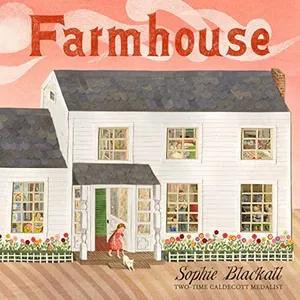
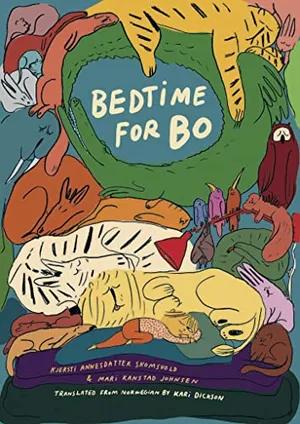
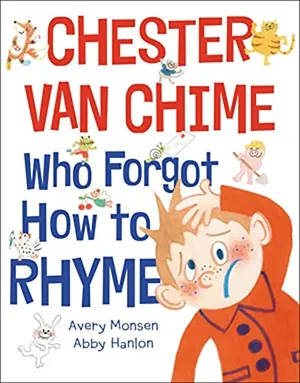
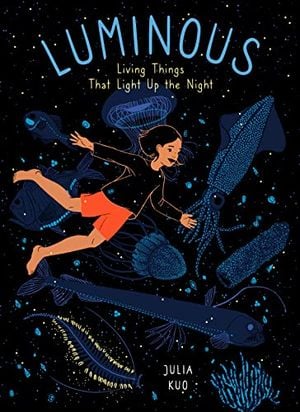
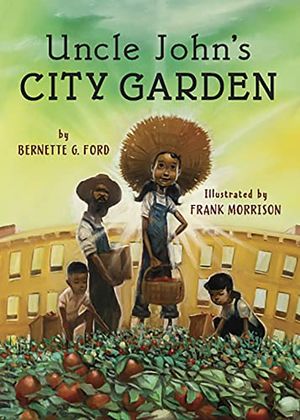
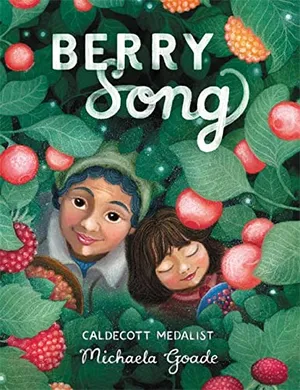
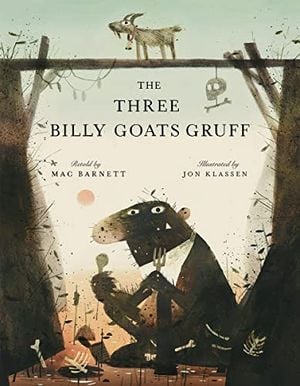
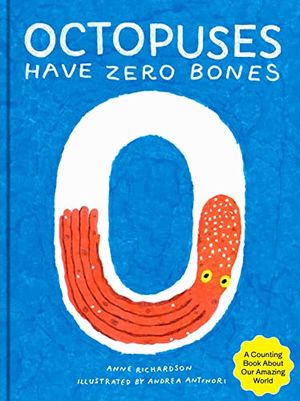

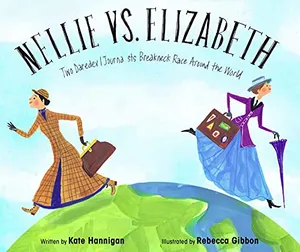
/https://tf-cmsv2-smithsonianmag-media.s3.amazonaws.com/accounts/headshot/megan.png)